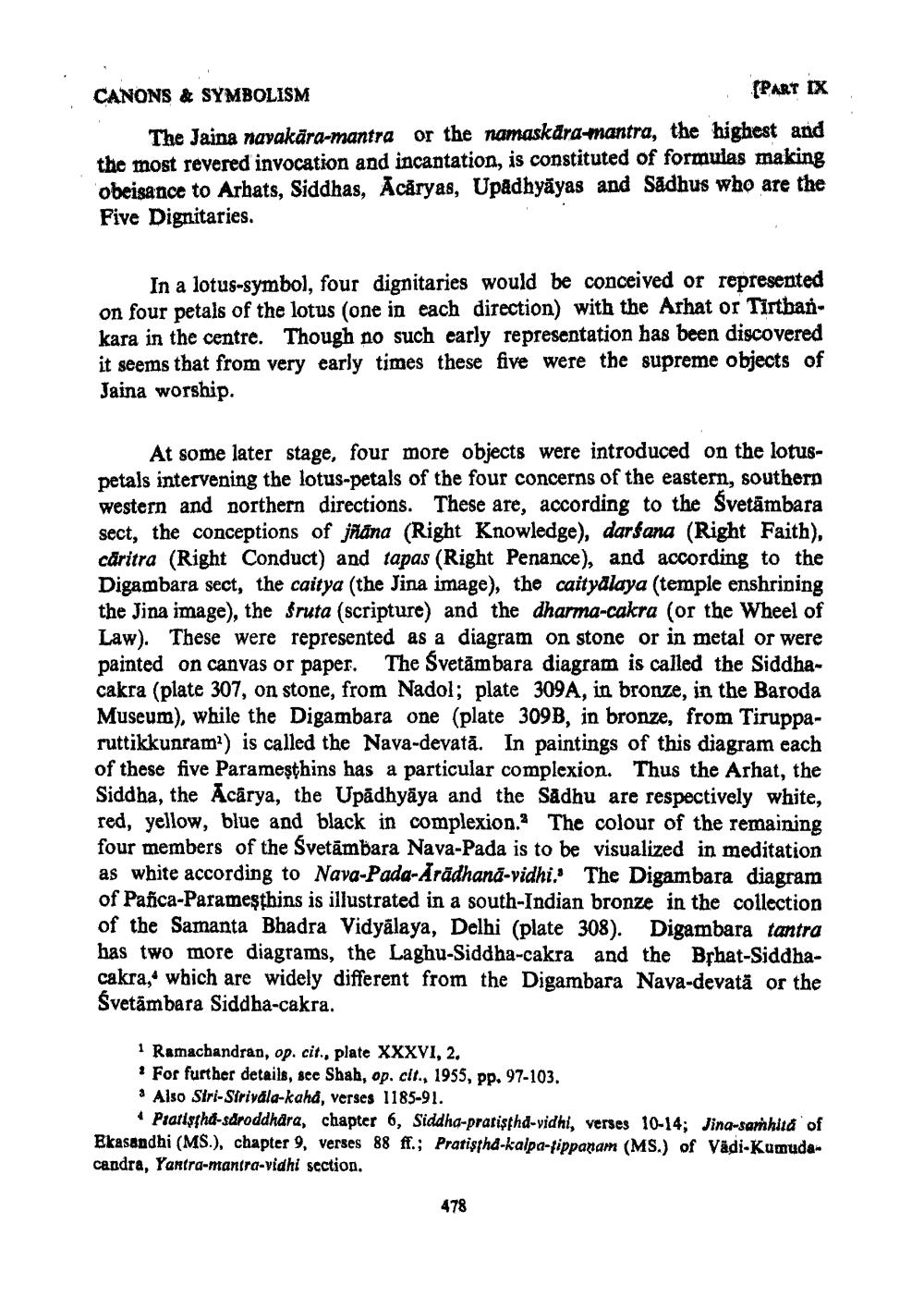________________
CANONS & SYMBOLISM
(PART IX
The Jaina nayakära-mantra or the namaskara-mantra, the highest and the most revered invocation and incantation, is constituted of formulas making obeisance to Arhats, Siddhas, A căryas, Upadhyāyas and Sådhus who are the Five Dignitaries.
In a lotus-symbol, four dignitaries would be conceived or represented on four petals of the lotus (one in each direction) with the Arhat or Tirtbankara in the centre. Though no such early representation has been discovered it seems that from very early times these five were the supreme objects of Jaina worship
At some later stage, four more objects were introduced on the lotuspetals intervening the lotus-petals of the four concerns of the eastern, southern western and northern directions. These are, according to the Svetämbara sect, the conceptions of jñāna (Right Knowledge), darśana (Right Faith), căritra (Right Conduct) and tapas (Right Penance), and according to the Digambara sect, the caitya (the Jina image), the caitydlaya (temple enshrining the Jina image), the fruta (scripture) and the dharma-cakra (or the Wheel of Law). These were represented as a diagram on stone or in metal or were painted on canvas or paper. The Svetāmbara diagram is called the Siddhacakra (plate 307, on stone, from Nadol; plate 309A, in bronze, in the Baroda Museum), while the Digambara one (plate 309B, in bronze, from Tirupparuttikkunram) is called the Nava-devată. In paintings of this diagram each of these five Parameşthins has a particular complexion. Thus the Arhat, the Siddha, the Acārya, the Upadhyāya and the Sadhu are respectively white, red, yellow, blue and black in complexion. The colour of the remaining four members of the Svetāmbara Nava-Pada is to be visualized in meditation as white according to Nava-Pada-Arādhanā-vidhi.' The Digambara diagram of Panca-Parameşthins is illustrated in a south-Indian bronze in the collection of the Samanta Bhadra Vidyalaya, Delhi (plate 308). Digambara tantra has two more diagrams, the Laghu-Siddha-cakra and the Brhat-Siddhacakra, which are widely different from the Digambara Nava-devatā or the Svetāmbara Siddha-cakra.
1 Ramachandran, op. cit., plate XXXVI, 2. . For further details, see Shah, op. cit., 1955, pp. 97-103. * Also Siri-Striväla-kaha, verses 1185-91.
• Piaristha-sdroddhara, chapter 6, Siddha-pratişthd-vidhi, verses 10-14; Jina-sarhita of Ekasandhi (MS.), chapter 9, verses 88 ff.; Pratisphd-kalpa-tippanam (MS.) of Vädi-Kumudacandra, Yantra-mantra-vidhi section.
478




